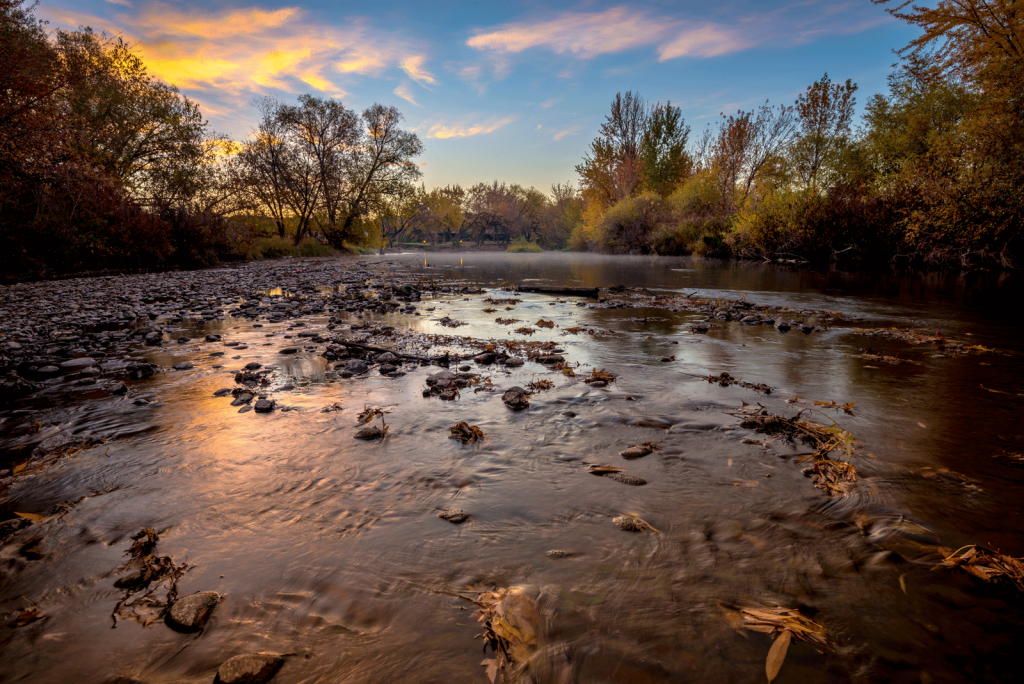
Examining how native plantings in CRP fields act as natural filters to protect waterways from pollutants and excess nutrients.
Agricultural runoff is one of the leading causes of water pollution across the United States. When rainwater or irrigation washes over cropland, it can carry sediment, fertilizers, pesticides, and other pollutants into nearby waterways. This runoff contributes to harmful algal blooms, degraded aquatic habitats, and declining water quality in streams, rivers, and lakes.
Fortunately, landowners can be part of the solution through the Conservation Reserve Program (CRP). By establishing native vegetation on environmentally sensitive land, CRP fields serve as natural buffers that reduce runoff and filter out contaminants before they reach waterways.
At All Native Seed, we provide the native grass and forb seed mixes that make these conservation efforts possible. Here’s how CRP plantings help protect our water resources, while also improving the health of your land.
What Is Agricultural Runoff?
Agricultural runoff occurs when precipitation flows over land used for farming and carries pollutants into bodies of water. These pollutants can include:
- Nitrogen and phosphorus from fertilizers
- Pesticides and herbicides used for crop protection
- Sediment from eroded topsoil
- Pathogens and organic matter from livestock operations
Once these substances enter waterways, they can cause ecological damage such as oxygen depletion, fish kills, and drinking water contamination.
How CRP Reduces Runoff and Pollution
When landowners enroll in CRP and establish native vegetation, they’re creating natural infrastructure that slows and filters water as it moves across the landscape. Here’s how it works:
Root Systems Stabilize the Soil
Native grasses like Big Bluestem, Switchgrass, and Indiangrass have deep, dense root systems that hold soil in place. This prevents topsoil erosion and keeps sediment out of streams.
Vegetative Cover Slows Water Flow
CRP plantings create thick vegetation that reduces the speed of surface runoff. Slower water flow means less erosion and more time for pollutants to be absorbed or filtered by the plants and soil.
Nutrient Uptake by Native Plants
Many CRP plantings include wildflowers and grasses that actively take up excess nitrogen and phosphorus from the soil and water, preventing these nutrients from entering local waterways.
Buffer Strips Protect Riparian Zones
In practices like CP21 (Filter Strips) and CP22 (Riparian Buffers), CRP fields are strategically placed along water bodies. These buffers act as a protective barrier, capturing runoff from adjacent agricultural land.
Long-Term Water Quality Benefits
By reducing runoff, CRP plantings contribute to cleaner, healthier water for communities, wildlife, and agricultural use:
- Decreased nutrient loading in lakes and streams
- Improved aquatic habitats for fish, amphibians, and macroinvertebrates
- Reduced need for water treatment in downstream areas
- Lower risk of flooding and stormwater surges
These benefits don’t just help the environment; they also enhance the sustainability of surrounding farmland and reduce liability for pollution-related damage.
Choosing the Right Seed Mix for Water Protection
Not all CRP seed mixes are the same. To maximize the water quality benefits of your planting, it’s essential to choose a diverse, regionally adapted mix of native grasses and forbs.
At All Native Seed, we offer:
- NRCS-compliant seed mixes tailored to your region and CRP practice
- Custom blends designed for filter strips, riparian buffers, and wetland restoration
- BOOST-treated seed for improved germination and early plant establishment
- Expert guidance on site preparation, seeding techniques, and maintenance
Get Started with CRP for Clean Water
Participating in CRP is a powerful way to protect water quality while improving your land and receiving financial support. Whether you’re planting a buffer strip, restoring a wetland, or converting marginal cropland to native prairie, your efforts have a ripple effect that benefits the entire watershed.
Ready to protect water while building healthy soil and habitat?
Reach out to All Native Seed today to learn more about CRP seed mixes and how we can support your conservation goals from the ground up.
